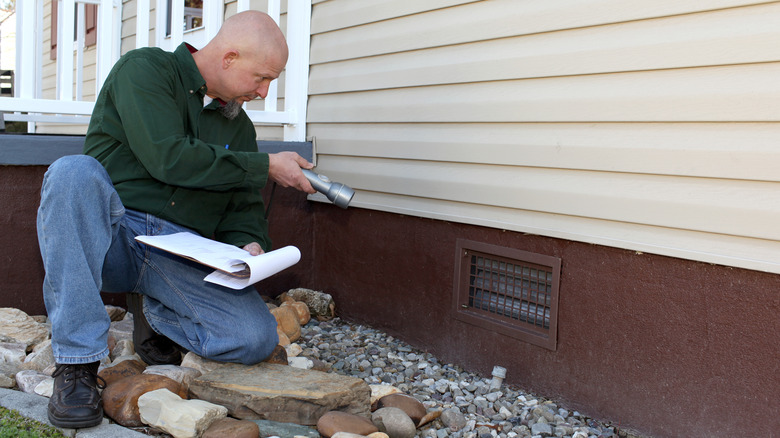When Is It Time To Worry About Cracks In Your Drywall? Here's What We Know
Drywall cracks are pretty common, and while they don't look great, they are often nothing to worry about. Houses settle over time. As a result, hairline cracks appear. The majority of US houses and apartments under four stories tall are timber framed, which can move a little due to seasonal changes. If the cracks are bugging you, there are a bunch of drywall repair hacks that can save time and money, and you can soon have the room looking pristine again.
While vertical cracks along drywall seams are mostly cosmetic, it could mean that the drywall just wasn't installed well. There are drywall mistakes to avoid at all costs, but maybe a previous owner of the home wasn't as skilled as they thought, or a contractor cut corners. It does happen. The cracks are unsightly. Rectification can be a little time-consuming, but they are not a major problem. However, there are other types of cracks that could indicate an underlying issue that needs to be examined before the situation gets worse. Some experts say that any crack that exceeds ¼ inch wide is something to worry about as it could be caused by problems with your foundation or other structural movement. The type of crack you have can also be a giveaway, so let's take a look.
What different types of drywall cracks could mean
Spiderweb cracks, common in ceilings, are usually caused because too much joint compound (often called mud) is used. It cracks as it dries out. The usual fix is to sand it off and reapply. If there are no apparent cracks when that's been done, there is nothing to worry about. However, if you notice dampness, you might have a water leak, which should be investigated. It is also common to find cracks around windows and doors, which happen when your house settles. However, if the doors or windows start sticking, there could be underlying building movement that needs to be addressed.
If you notice horizontal cracks or diagonal cracks running at 45 degrees that are not associated with a door or window frame, you could be dealing with serious structural issues. Either of these types of cracks could indicate problems caused by improper draining of water or soil compaction underneath the dwelling. It could be a major clue that your foundation is wreaking havoc on your home's structure. Regardless of your DIY skill level, this is definitely when you will want to call in a professional to assess the situation.

